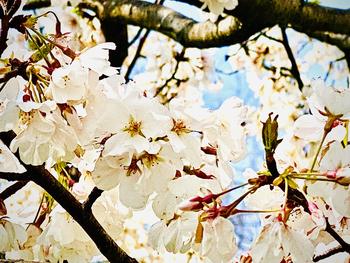In This Story
Every spring, thousands flock to the Tidal Basin in Washington, D.C . to witness the annual occurrence of cherry blossoms blooming. The peak bloom period sparks a variety of parades, events, and the first ever Cherry Blossom Prediction competition, hosted by George Mason University.

The competition was organized by Mason Department of Statistics professors Jonathan Auerbach and David Kepplinger, along with Elizabeth Wolkovich from the Department of Forest and Conservation Sciences at the University of British Columbia.
According to Auerbach, it’s the first year students have participated in this kind of international prediction competition, which is open to everyone whether or not they are a student. Participants submit their predictions for each location along with a narrative of how they came to their guesses. Each submission is then assessed by a panel of international judges from statistics, biology, and ecology backgrounds.
“The cherry blossoms signify a special time of year, and they’re fleeting,” says Auerbach. “Statistics can be dry, so it’s great for our students to participate in a competition like this. The cherry trees hold much appeal, both scientifically and for a diverse student body.”
Historic data on peak bloom dates served as a starting point. Students then considered anything and everything that could affect blooming times, like extreme weather, soil, rain fall, and average blooming time over the last few years, etc. and used tools like machine learning to analyze bloom timings.
The 2022 peak cherry blossom bloom date in Washington was March 21. The predictions from undergraduate student Sara Alhassani and graduate student Douglas Nedza came closest, with Alhassani zeroing in on March 23 and Nedza at March 20.
Nedza currently uses machine learning to study climate variability, and he saw the competition as a way to put his skills and knowledge to the test. He selected a variety of predictors on spring variability, like temperatures up to the end of February and temperature trends over the last 60 years.
“The machine learning algorithm is given these predictors with corresponding cherry blossom date observations, and attempts to produce the best prediction model was based on the provided data,” he says.
The winner is eligible for up to $5,000 in cash and prizes. Those who missed the competition this year can check out the 2022 entries, and participate next year.
